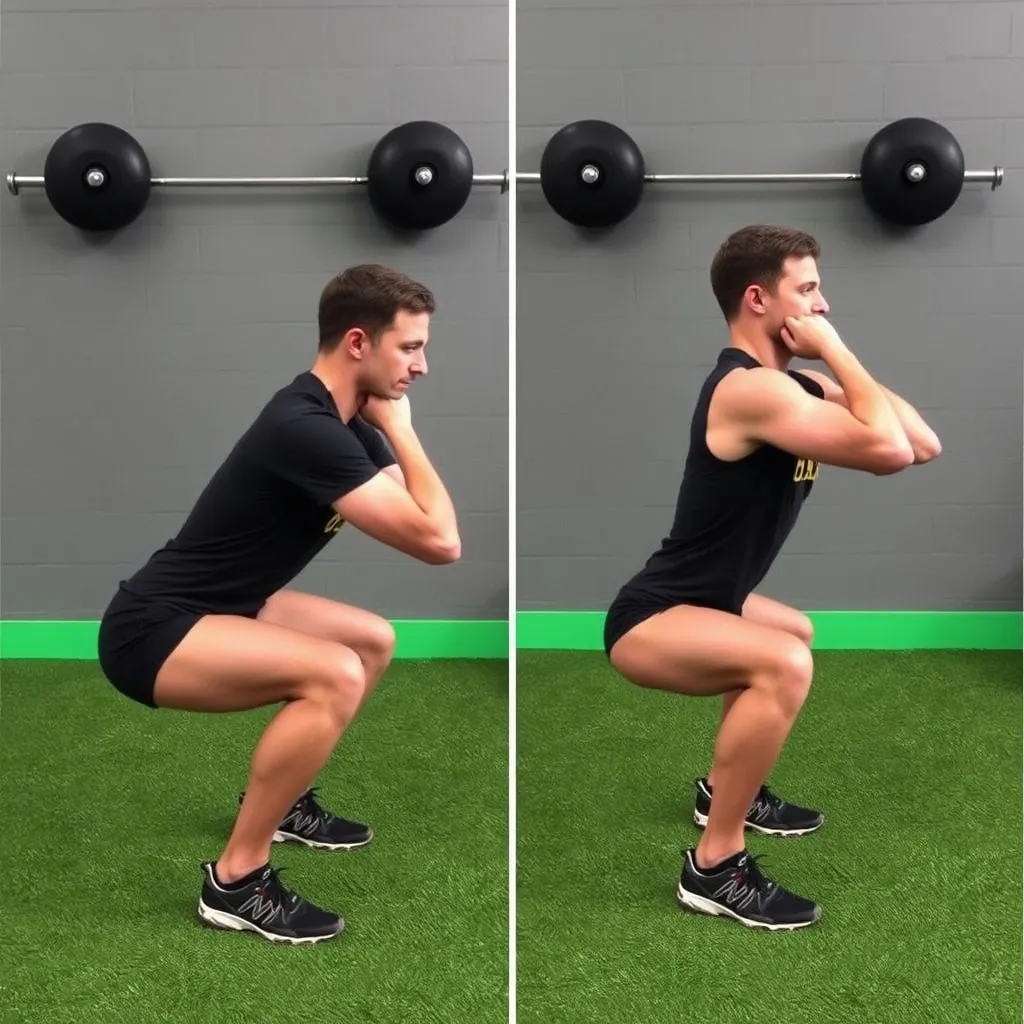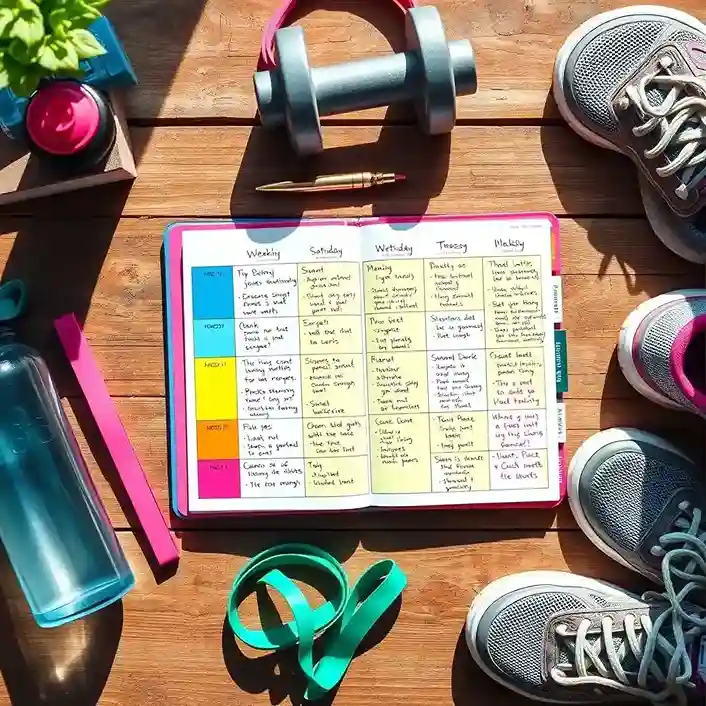Starting weight training can feel overwhelming at first. But it’s one of the best ways to improve your health, boost your confidence, and feel stronger every day. More people are trying strength workouts to stay fit and take control of their wellness. According to the CDC, strength training helps build muscle, strengthen bones, and increase your metabolism.
In this guide, you’ll discover 10 simple exercises perfect for beginners. We’ll cover how to stay safe, choose the right equipment, and add these moves to your weekly routine. Ready to lift confidently and safely? Let’s dive in.
Why Weight Training Is Important for Beginners

Health Benefits of Strength Training
Working out with weights isn’t just about looking good. It helps your body become stronger and work better. Strength training increases muscle mass, which helps burn more calories even when you’re resting. It also strengthens your joints and bones, making everyday movement easier and reducing injury risk.
Mental health improves too. Many find lifting weights reduces stress, boosts self-esteem, and improves mood. Building strength isn’t just physical—your mind gets a workout as well.
Common Challenges for Newcomers
Many fear they might hurt themselves or do exercises wrong. Some worry it’s too hard or complicated to start. But the key is starting slow and learning proper form first. Use light weights or resistance bands until you master each move.
Remember, everyone starts somewhere. It’s about progression, not perfection.
Expert Advice
Fitness trainers recommend beginning with simple routines and focusing on consistency. Organizations like ACE or NASM advise newbies to avoid rushing and to prioritize safe techniques. Over time, gradually increase weights and reps to challenge your muscles while staying safe.
Key Principles Before You Start Weight Training
Proper Technique and Safety
Always use correct form to avoid injuries. Keep your movements controlled and avoid rushing through exercises.
Start with light weights, focusing on feeling the right muscles work. It’s better to lift less than to risk straining your muscles or joints.
Equipment and Workout Space
What do you need? Dumbbells, resistance bands, or machines all work well for beginners.
Create a safe workout spot at home or at the gym. Clear enough space and set up your equipment at reachable heights to stay comfortable and avoid accidents.
Developing a Beginner Workout Plan
Aim for 2 to 3 sessions each week. Allow at least one rest day between workouts for recovery. As you get stronger, gradually add more weight or reps. Keep your routine simple and steady, and don’t forget to listen to your body.
Top 10 Effective Weight Training Exercises for Beginners
1. Bodyweight Squats

Stand with feet shoulder-width apart. Keep your back straight. Bend your knees and hips to lower yourself as if sitting in a chair. Push through your heels to stand back up.
Benefits: Strengthens legs, glutes, and core.
Try different depths or add light weights as you improve.
2. Dumbbell Chest Press
Lie on a bench or the floor. Hold dumbbells at chest level. Push them upward until your arms are straight. Lower slowly.
Benefits: Builds chest, shoulders, and triceps.
Control your movements to avoid shoulder strain.
3. Bent-Over Dumbbell Rows
Stand with feet hip-width apart. Hinge at the hips, keeping your back flat. Let dumbbells hang down. Pull them toward your hips and squeeze your upper back muscles. Lower slowly.
Benefits: Strengthens upper back, lats, and arms.
Keep your back straight to avoid injury.
4. Standing Shoulder Dumbbell Press
Hold dumbbells at shoulder height. Keep your feet shoulder-width apart. Push weights overhead, then lower back to start.
Benefits: Boosts shoulder strength and mobility.
Use lighter weights if tight shoulders.
5. Deadlifts (with Dumbbells or Kettlebell)
Stand with feet hip-width apart. Hold weights in front of your thighs. Hinge at your hips, keeping your back flat, and lower weights toward the ground. Stand back up.
Benefits: Strengthens your lower back, legs, and glutes.
Focus on a smooth hip hinge to stay safe.
6. Plank Variations
Get into a forearm plank position. Keep your body straight from head to heels. Hold as long as you can.
Benefits: Builds core stability and shoulder strength.
Keep your hips level and avoid dropping or lifting hips too high.
Try side planks for variety.
7. Step-Ups with Dumbbells
Use a sturdy bench or step. Step onto it with one foot, then bring the other up. Step back down. Hold dumbbells if you want more resistance.
Benefits: Boosts leg strength and improves balance.
Start with a low step and work your way up.
8. Bicep Curls
Hold dumbbells at your sides. Keep your elbows close to your body. Curl the weights up, then slowly lower.
Benefits: Develops arm muscles and strength.
Avoid swinging your body for momentum.
9. Tricep Dips
Use a bench or a sturdy chair. Place hands behind you, elbows bent at 90 degrees. Push through palms to straighten arms, then lower again.
Benefits: Strengthens your upper arms.
Be careful not to strain your shoulders—keep movements slow and controlled.
10. Glute Bridges
Lie on your back with knees bent. Feet flat on the floor. Engage your glutes as you push hips upward. Lower slowly and repeat.
Benefits: Supports hip stability and back health.
Add weight or try single-leg bridges to increase challenge.
Creating a Balanced Weight Training Routine
Sample Weekly Workout

For beginners, a simple schedule might look like this:
- Day 1: Squats, chest press, plank
- Day 2: Rest or gentle activity
- Day 3: Deadlifts, rows, shoulder press
- Day 4: Rest or light stretching
- Day 5: Step-ups, bicep curls, glute bridges
- Weekend: Rest or active recovery like walking
Progressive Overload
To keep improving, slowly add more reps, sets, or weight. Don’t push too fast—let your muscles adapt.
Listen to your body. If something causes pain, ease up or rest that part.
Tracking Progress
Use a journal, app, or notes to record your weights and reps. Set small goals, like lifting a little more or doing more reps, to stay motivated.
Mistakes to Avoid and Tips for Success
- Never sacrifice form for heavier weights.
- Don’t skip warm-ups or cool-downs.
- Avoid training only one muscle group; work on a balanced plan.
- Stay consistent and patient—building strength takes time.
- Seek help from a trainer if you’re unsure about proper technique.
Conclusion
Starting weight training is a smart move for your health and confidence. Focus on these 10 beginner exercises to build a solid foundation. Remember, safety and proper technique matter most. With patience, consistency, and the right approach, you’ll see progress and enjoy the many benefits strength training offers.
So, pick up those weights, stay motivated, and enjoy your journey toward a stronger, healthier you!